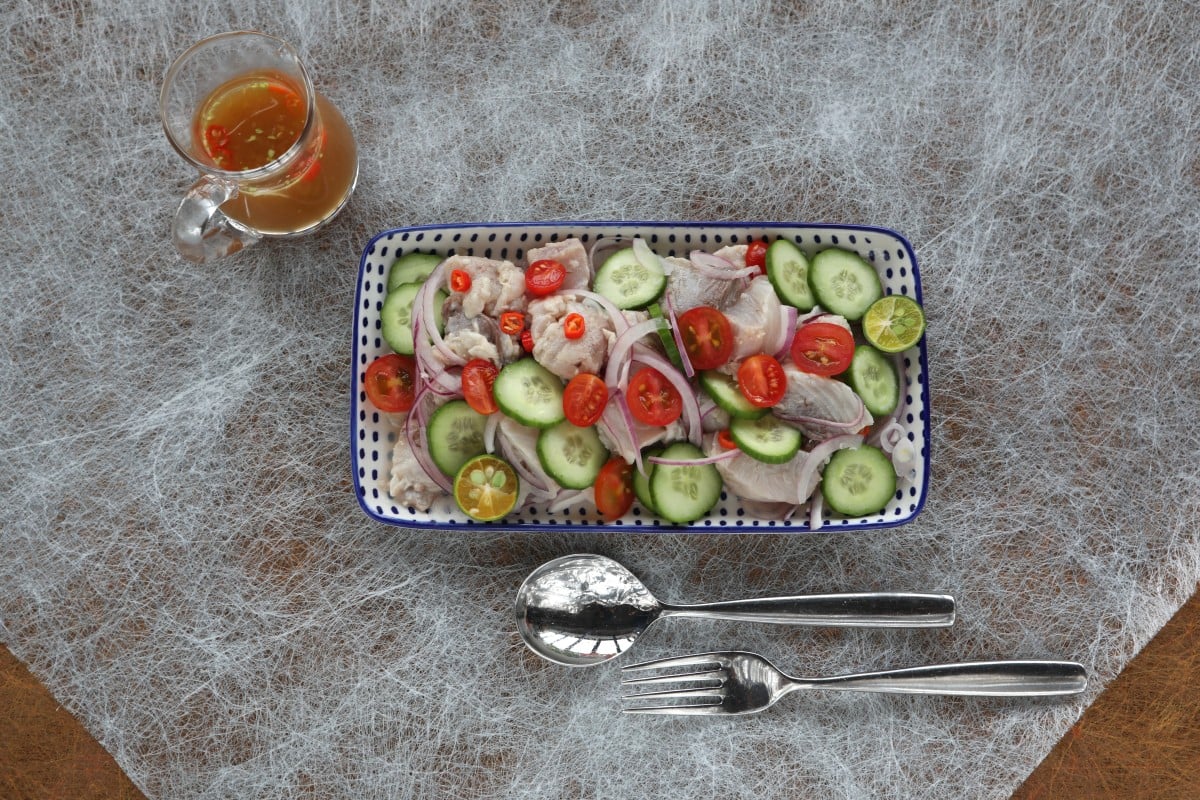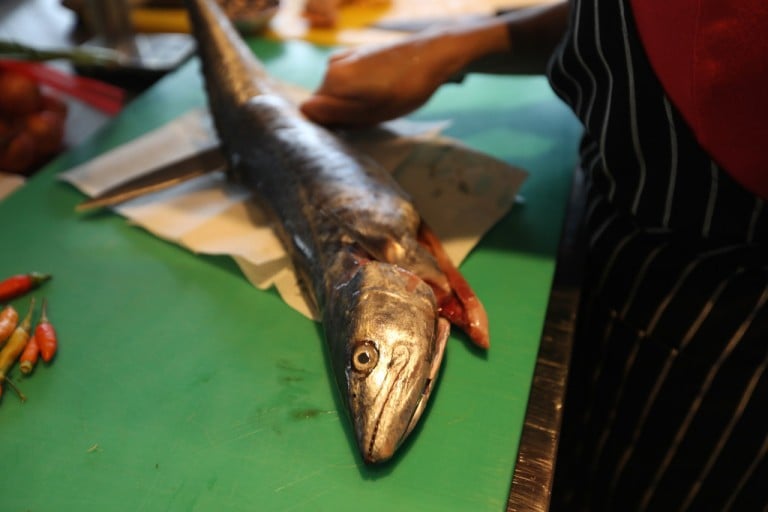
One of my most vivid food memories is visiting the Cubao Farmers Market, in Manila, with Margarita Forés, voted Asia’s Best Female Chef in the 2016 Asia’s 50 Best Restaurants Awards. As we walked through the market, an assistant pushed a cart full of ingredients, which puzzled me until we arrived at one of Forés’ favourite stalls, which had a lavish display of locally caught fish, sea urchins, shrimp and other seafood.
There was a flurry of activity as Forés pulled ingredients out of the cart, and her assistant and the fishmonger extracted the edible bits from the sea urchins, sliced some fish and shelled shrimp. Within minutes, we were eating the freshest kinilaw – raw seafood mixed with calamansi juice, vinegar and other seasonings. It was a delicious, quickly made snack.
The dressing for different types of kinilaw is not one-recipe-fits-all; the flavours should be tailored to the seafood. Sweet and more delicately flavoured seafood needs lighter, more subtle seasoning that doesn’t overwhelm, while strong, oily fish can stand up to stronger flavours. Different areas of the Philippines use different ingredients, often including fish sauce, chillies or coconut milk.
The constants in almost all recipes are vinegar and calamansi. Avoid using cheap “white vinegar” for kinilaw; look for coconut or palm vinegar in shops specialising in ingredients from the Philippines, where you can also buy fresh calamansi. If you can’t find coconut or palm vinegar, use rice vinegar.
I prefer strong, oily fish for kinilaw – mackerel is my favourite, but any larger types are good (although I don’t use salmon). We used a whole fish for this dish. A fish that weighs 1.2kg (42 1/3 oz) will yield about 500g (18oz) of skinless fillet.
For ginger juice, grate fresh ginger on a ceramic grater, then drain the liquid and pulp in a small, fine sieve, pressing the solids to extract as much liquid as possible. Calamansi is a small lime with a distinctive taste and scent. It's essential to Filipino cooking, but if you can't find it, use Persian lime.

If using a whole fish, remove the head, bones and skin. Run your fingers lightly over the flesh to feel for any remaining bones, and remove them with tweezers. Cut the fillets into bite-sized slices.
Stir the palm sugar with the coconut vinegar until dissolved, then mix in the calamansi juice, ginger juice and fish sauce. Dip a piece of fish in the mixture and taste – it should be tart but balanced. If it’s too acidic, stir in more sugar and/or fish sauce. Mince the chillies and mix them into the dressing.
Add about half of the dressing to the fish pieces and mix well. Leave briefly (no longer than five minutes) while preparing the other ingredients.
Slice the cucumber about 3 mm (1/8 in) thick. Thinly slice the shallots and red onion, and halve the cherry tomatoes.
Put the fish mixture into a colander to drain off the liquid. Place the fish in a bowl and add the shallot and red onion slices. Mix with some of the remaining dressing, then add the cucumber and tomato pieces. Arrange the ingredients on a platter with the remaining dressing on the side. Serve immediately.